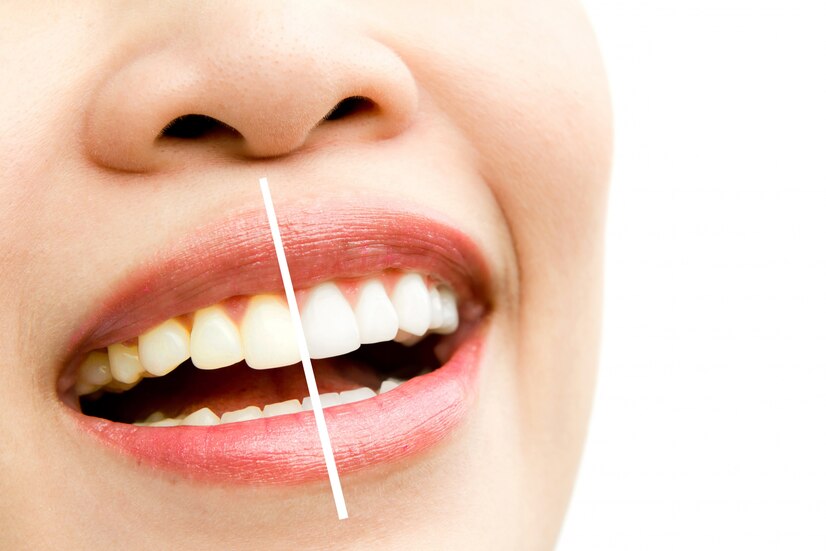
A common cosmetic dental procedure is teeth whitening. It’s linked to how good you look and the resulting confidence. However, some of you might have misgivings about it and would like them addressed before you search for best teeth whitening service near me. Let’s do that. I’ll cite the widely used teeth whitening methods, the fallacies that go along with this dental practice, and the facts.
Common Teeth Whitening Procedures
There are numerous popular teeth-whitening techniques, and they range from professional procedures to remedies you can do at home.
1. In-Office Whitening – Performed by dentists using high-concentration bleaching solutions (usually using hydrogen peroxide or carbamide peroxide) and intensified with LED light for better effects.
2. At-Home Whitening – The personal use of dentist-prescribed products that one gets at pharmacies, like whitening strips, gels, and pens.
3. Whitening Toothpaste & Rinses – Although the effects are minor, they can remove surface stains with low-peroxide solutions or mild abrasives.
4. Natural Remedies – Despite their growing popularity, baking soda, activated charcoal, and oil from coconut, sesame, or sunflower may have little effect and could even damage the enamel.
The Myths and Truths
Myth 1: Teeth Whitening Products Can Damage Enamel
Fact: Not all whitening methods harm enamel. Professional treatments and dentist-approved at-home kits are formulated to minimize enamel damage. The primary whitening agents penetrate the dentin to break up stains without eroding enamel. On the other hand, too much can lead to enamel weakening.
Myth 2: Whitening Toothpaste is Always Safe
Fact: Whitening toothpaste is generally safe. However, some contain abrasive ingredients (like silica or baking soda) that can wear down enamel if used too aggressively. Look for the Seal of Acceptance of the American Dental Association. It guarantees the product is effective and safe.
Myth 3: Teeth Whitening Is Permanent
Fact: No whitening treatment has a permanent effect. How long they last will depend on how you take care of your teeth and your food choices. Avoid food and drinks that can discolor teeth and maintain a rigorous dental hygiene routine. Eventually, one will need cosmetic dentistry procedures to maintain the whiteness.
Myth 4: Natural Whitening Remedies Are Safer Than Chemical Treatments
Fact: Some natural remedies, like lemon juice or undiluted apple cider vinegar, are highly acidic and can erode enamel over time. Baking soda, though mildly abrasive, is safer in moderation but should never replace regular toothpaste. Always consult a dentist before using DIY whitening methods, even the natural ones.
Myth 5: Everyone Can Whiten Their Teeth Safely
Fact: Not all teeth respond well to whitening. There are people with thin enamel and they may develop gum disease, cavities, or exposed roots that can lead to extreme discomfort or damage. A visit to the dentist is fundamental before one starts any whitening regimen.
The Key Takeaways on Whitening
When done properly, teeth whitening is a safe and efficient method of improving your smile without causing any harm to the enamel. The secret is to use only dentist-approved techniques and avoid overdoing them, especially those abrasive DIY solutions.
With that, feel free to go key the best teeth whitening service near me in search of who can give you the best oral health treatment. Speak with your dentist if you’re thinking about teeth whitening. If you need advice on whom to see, call Caldwell Dentistry Co. at 208-454-9217.
